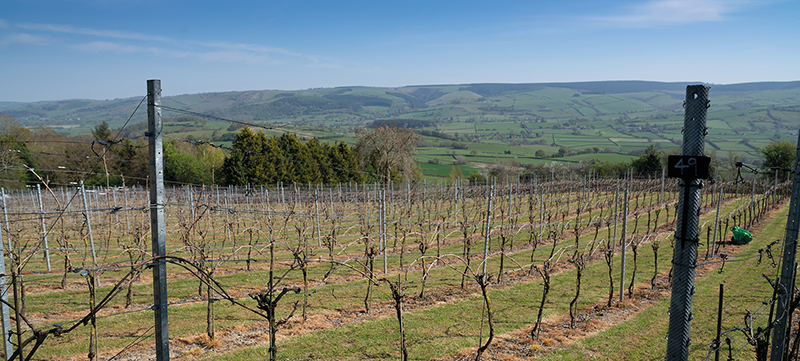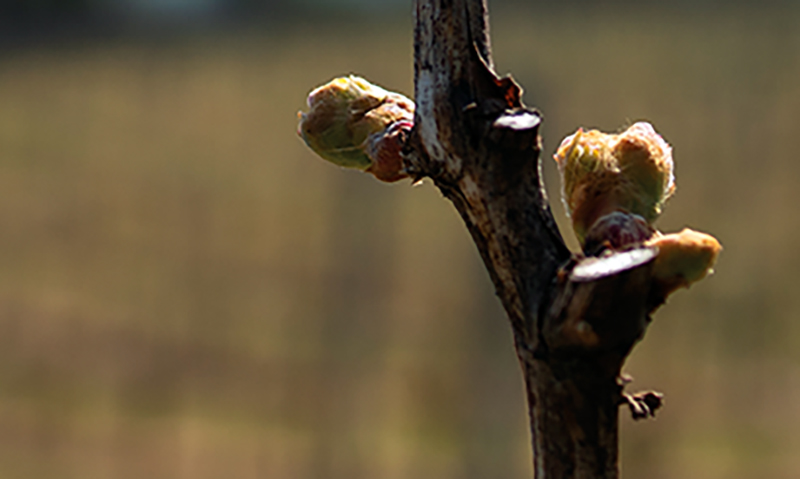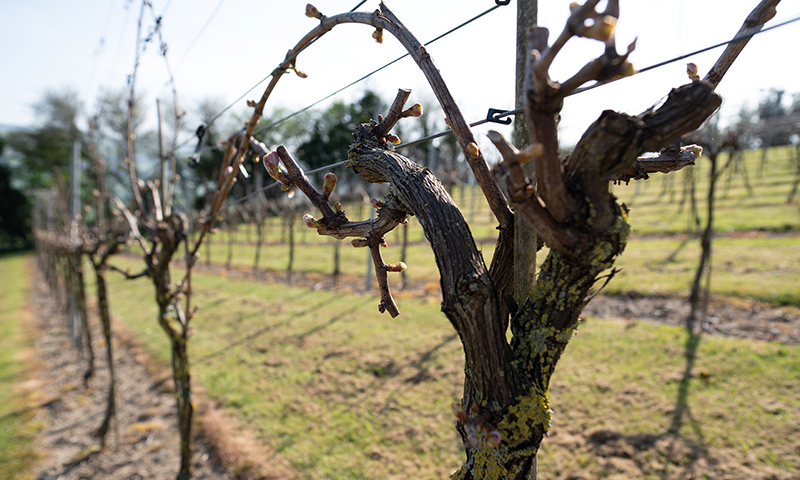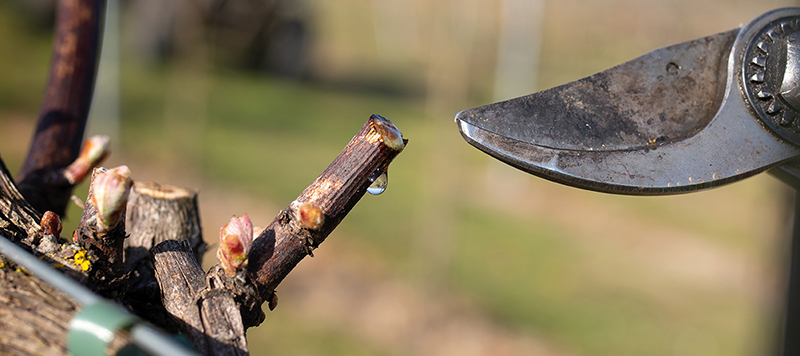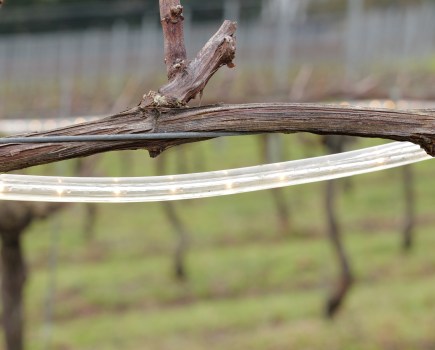Montgomery Vineyard chose to plant its vines on previously unworked land high up at 900 feet. Rebecca Chaplin finds out what this means for Welsh wine.
With Welsh Wine Night about to take place, it had seemed like the ideal time to find out exactly what it’s like to grow grapes in a country better known for wet weather and sheep farming. At Montgomery the team are focused purely on the growing of grapes and then delivering the final product to distributors, but while I tried to catch a moment with them they were run ragged with orders ahead of the online wine tasting event.
“It’s just non-stop at the moment. We’re trying to maximise the impact of Welsh Wine Night. Pubs are closed so people are ordering our wine from all over the place – it’s great!” owner Woody told me.
“From that side of things, we’re delivering all over the place and I’m over the moon but how long it will last I’m not sure.”
Woody Lennard is a director of the family business, Montgomery Vineyard, and the one to tell me about how they work – or tries to between high demand for his wine going out to distributors in time for the event on April 24.
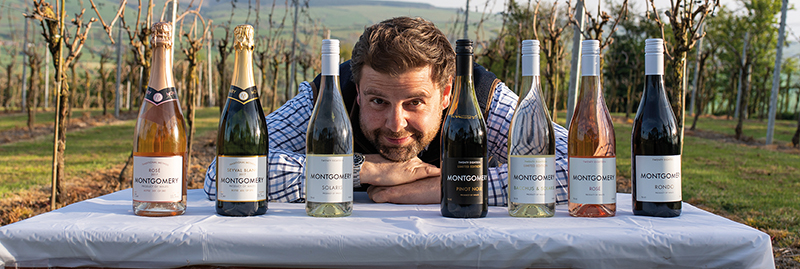
He told me: “We’ve whole heartedly got on board to support our industry with the Welsh Wine Night and English Wine Night. We have an Instagram TV ‘live social’ with Blackbook Winery and Wine Time London so I am really looking forward to interacting with our fantastic followers and spreading the love of Welsh wine across the UK and beyond.”
Although Woody’s role has become about developing the business as others continue to tend to the vineyard, he was the person to first spot the potential in the land.
“As a director, over the years my role has developed as the business has grown,” he explained. “Now we’re established, my focus is working with our suppliers to maintain the quality of the wine, coordinate distribution, while establishing new and maintaining client relationships.
“We’re a tight knit family business that works together all day, every day. Everyone has a role, my dad and uncle are in the vineyard taking care of the viticulture, mum is the office manager taking care of the day to day business. My brother looks after the accounts and my sister supports the IT and social media for the business.”
The vineyard itself sounds a bit like a fairytale or mythical place, something you might find in the back of C.S. Lewis’ wardrobe, as Woody describes how it has its own unique natural design. The vines themselves are planted 900 feet above sea level in a natural amphitheater that creates a mesoclimate in this pocket of Mid-Wales. Okay – we’re not talking about Welsh mountains but in equivalent length it’s only just bested by the Eiffel Tower.
Woody explained how this helps them, saying: “The vineyard occupies a five-acre site, with over three acres under vine. The vineyard is on the side of a hill, south facing with the vines planted directly north/south and free draining. The terroir is made up of flinty, glacial deposits and that has been the key to our success, as well as being naturally sheltered in an amphitheater created by the contours of the hill side.
“We’re on a hill so, for example the frost rolls in rather than flatlining because we’re just below the weather line. Being high up we catch the wind but some of the hedges are about 150 years old all the way around the vineyard and we’ve planted about 2,000 trees to bounce those different levels of protection to the vineyard,” he told me.
The story of Montgomery Vineyard begins when his family bought the property 50 years ago, but it was Woody’s experience in the wine industry and studies in geology that led to the vines being planted 44 years later. Before 2011, when the family first began cultivating the land, what is now the vineyards were simply meadows that had never been worked before.
-
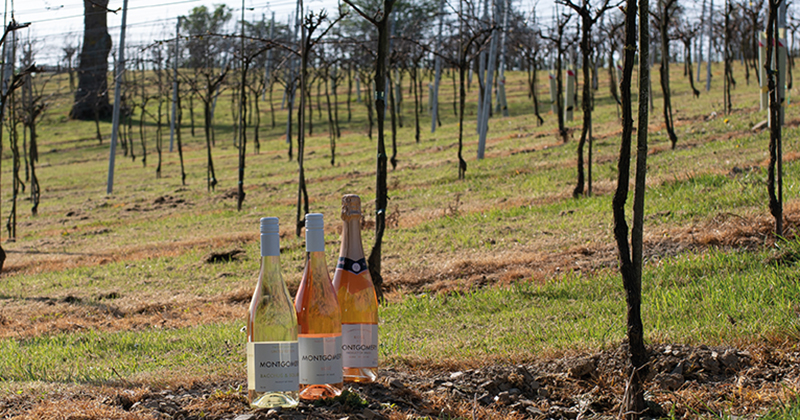
-
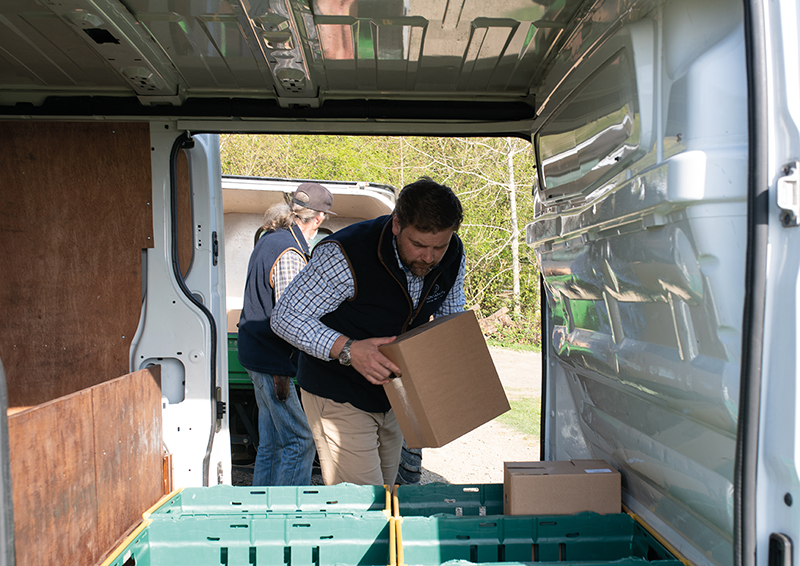
> Woody loads deliveries in the van -

“Our family bought the property in 1970 as a country retreat. It came with nine acres of land that had never had any agricultural use and the land was left to become a natural meadow with occassional topping,” he said.
“From travelling around the world, I’d visited many vineyards and you get an understanding of what are the main factors that make a good vineyard. That’s things like the terroir, south facing, the climate, free draining, the soils.
“Those are big environmental and geological factors that make for a good vineyard and we could see they were present here, plus we knew the ground was fertile because we’d had meadows there but it had never been touched from an agricultural point of view, so there were no chemicals, spraying or agricultural intervention.”
Before turning his hand to his vineyard, Woody had studied for a degree in geology and masters in project management, saying: “I have always been in the construction industry, with a passion for wine during my travels around the globe.”
“Geology was just something I was really interested in,” he said. “I’m the sort of person who likes to really get into things and understand the structure of how the world was and how it works, and it gives you a really good helicopter view of history throughout the natural environment.
“We have a clay type subsoil while the topsoil and subsoil is very stony and flinty. It was laid down in the glacial age on top of a bedrock that is quite soft, locally called Rotche, that has good water retention properties and good natural drainage at the same time, which is similar to a chalk setup.”
The groundwork was definitely there, and the future of the vineyard looked promising, but his next steps were to consult some expert suppliers and ensure his suspicions were correct.
“We consulted our agronomist John Buchan who took soil samples of the ground and he confirmed 100% the ground would be totally suitable. We also consulted Martin Vickers from Halfpenny Green Wine Estate for his expertise and then we started preparation for the vineyard,” Woody said.
“Between 2011 and 2014, we prepared and cultivated the ground and installed the primary infrastructure consisting of roads, windbreaks, fencing and drainage.
“In 2014, with the guidance of Stephen Skelton through the viticulture world via his publications, we hand planted 3800 vines, consisting of 1000 Solaris, 1000 Rondo, 1000 Seyval Blanc along with 600 Pinot Noir Precoce and 200 Bacchus so we could develop our own style of wines.”
He added: “We work with a fantastic network of suppliers and use too many to mention but the top three would be Halfpenny Green who take care of our contract making, The Label Makers Ltd who have produced our labels and John Buchan who provides our consultant agronomy services.”
-
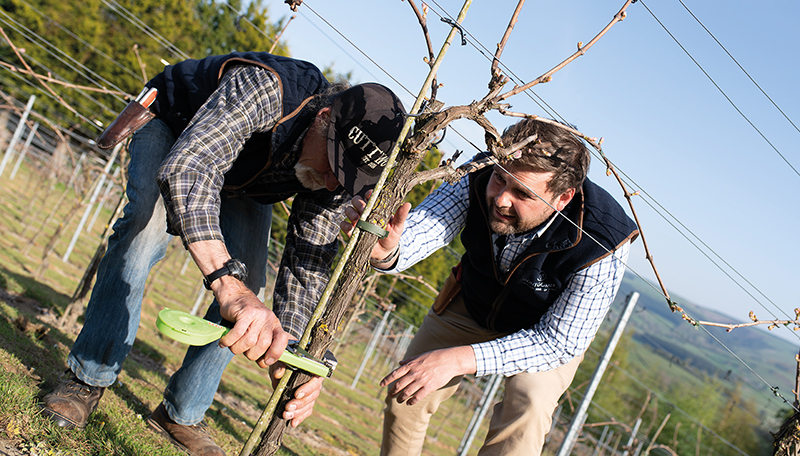
> Pete and Woody tend to the vines -
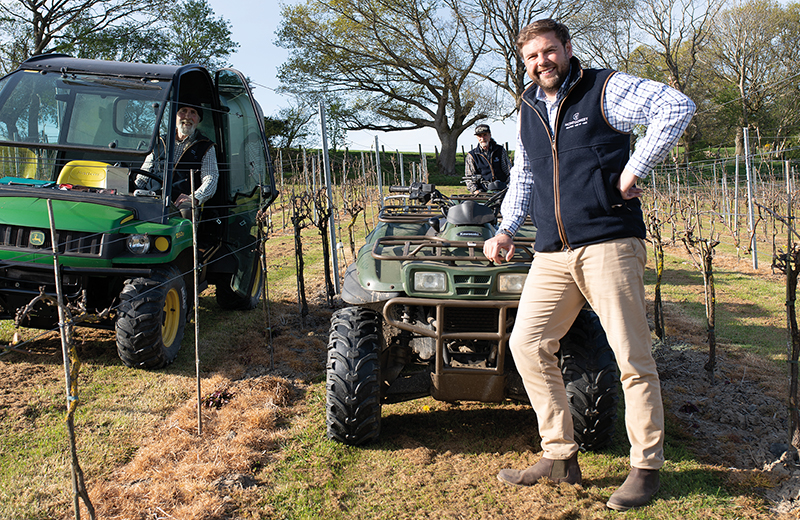
> Woody and his father Lenny in the vineyard -
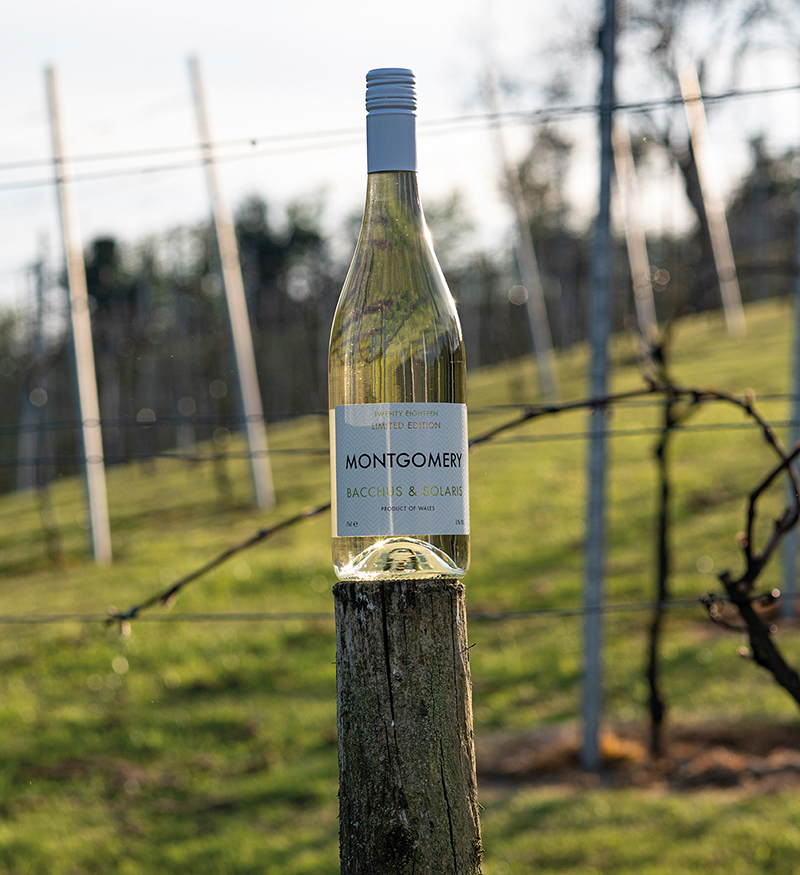
The proof, as we know, is in the finished product though, and Montgomery Vineyard now produces a variety of wines, which have all proved popular with their customers. The vineyard has since been highly decorated, too. Last year it walked away with four of five classes at the Welsh Wine Awards, although Woody admitted it was ‘quite embarrassing’ at the time.
“If I’m honest, until we made the wine for our first vintage in 2016, we didn’t know if we could grow the grapes at that level! What it does is give you a slightly smaller grape but the flavour and intensity that you get in those grapes is phenomenal. Since, then I’m proud to say our vintage has sold out each year.
“We didn’t realise how successful we could be, but it’s gone from strength to strength.”
As Woody explained: “We have the Solaris, that’s our dry white wine and we use that for a lot of blending. We also do an off-dry Bacchus Solaris, we’ve had some rave reviews about those and won quite a lot of awards as well.
“Then we have our Rhondo, probably one of the best-selling wines in our portfolio and also an award winner for best red wine in Wales. Then we have Pinot Noir that we mainly use for blending in our sparkling wines but we also have an individual Pinot Noir.”
The vineyard chose to partner with Halfpenny Green Winery, in Staffordshire not too far over the Wales-England border meaning they can deliver the grapes there within an hour for immediate processing. “We chose to partner with them because of their unwavering support and superb wine making skills,” said Woody, who had Halfpenny Green consult from the very early days of planting the vineyard. “Between Martin Vickers, Clive and Ben the process of vine to wine has been seamless. The only request was that award-winning wine is required every year while we aim to deliver top quality grapes at harvest.”
As Woody explained, in particular, the vineyard is proud of its 2018 Pinot Noir, which is now only available in very limited edition: “In 2018 we did an individual Pinot Noir, which is absolutely perfect, the brix and sugar levels were absolutely bang on so we didn’t have to add anything to it.
“What we’ve got in the bottle is exactly what came out of the vineyard. We hope we can do it again at that level or that quantity, but that is a fantastic wine. We did 1,000 bottles of that and it’s one of our limited editions. We don’t really advertise that; it just divided between our distributors.”
The family are now continuing their tasks in the vineyard and enjoying some warm spring days, while ensuring their wine reaches retailers across the UK from Scotland to Devon in time for the upcoming events.
“Bud burst is underway with this gorgeous weather and we have just finished tying down. Over the next few weeks, if no frost occurs, we will be pruning away our spare canes,” he said.
Idyllic it might look, and as lockdown continues, I’m still jealous of those working in the vineyards, but Woody’s final words echo that something like this requires immense amounts of dedication. “If you want to grow a vineyard, first, check out your personal energy levels to cope with the demands of one,” he said. “Secondly, you need to adopt the mantra that, ‘nothing is too much trouble’.”
-
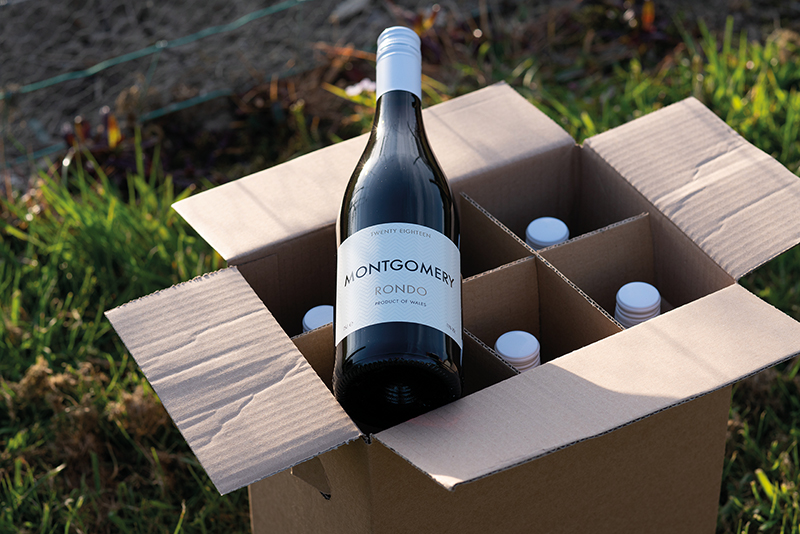
-
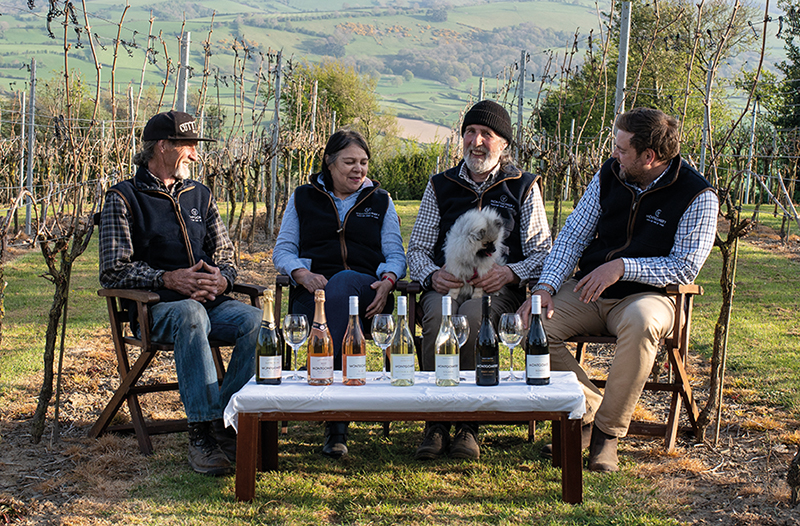
> The Lennard family, (L-R) Woody’s uncle Pete, mother Denise, Lenny and Woody -
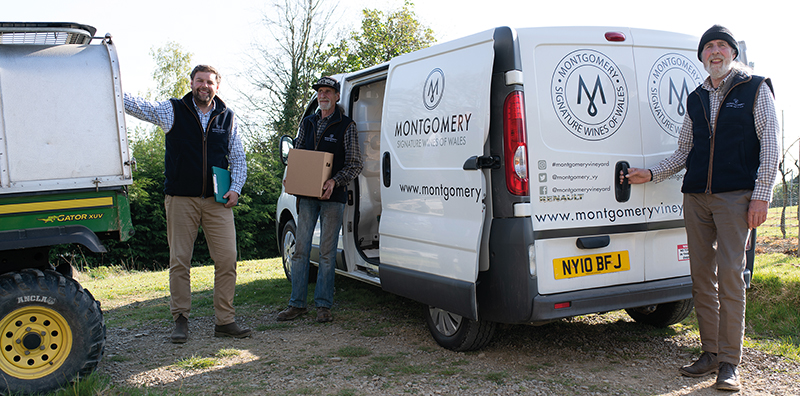
> Woody, Pete and Lenny prepare for Welsh wine night deliveries

